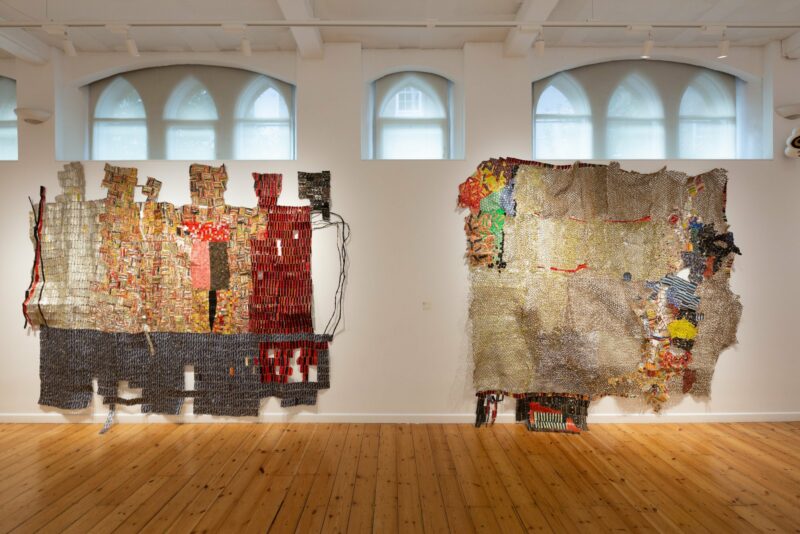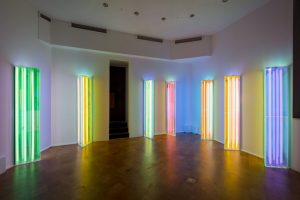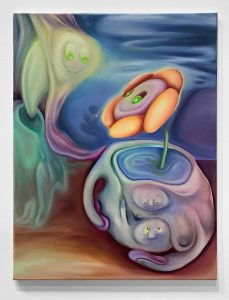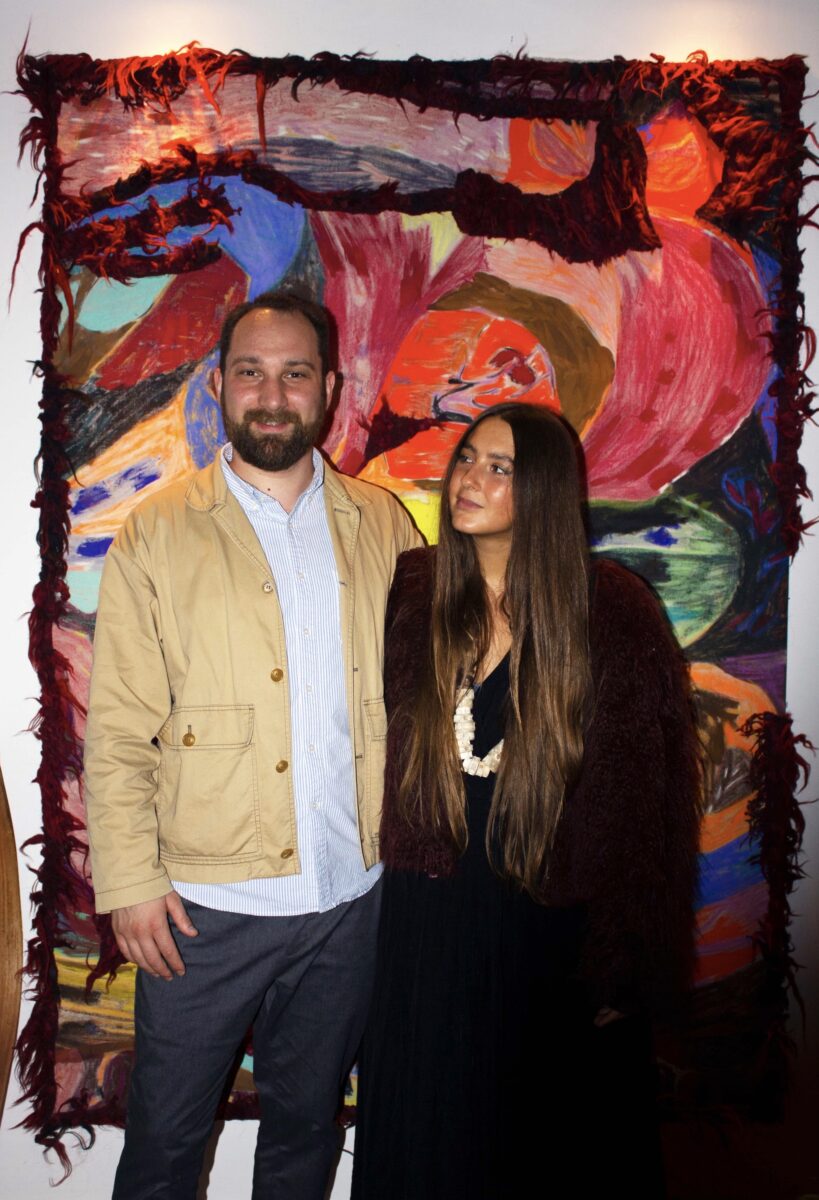
Italian born, London based artist Melania Toma recently sat down with curator and producer Nicholas Stavri to discuss her residency in Casa Wabi, Oaxaca. It’s influence on her paintings, her exploration of colour and narrative, and her recent exhibition ‘As Soon as the Sun Sets’ at Daniel Benjamin Gallery.
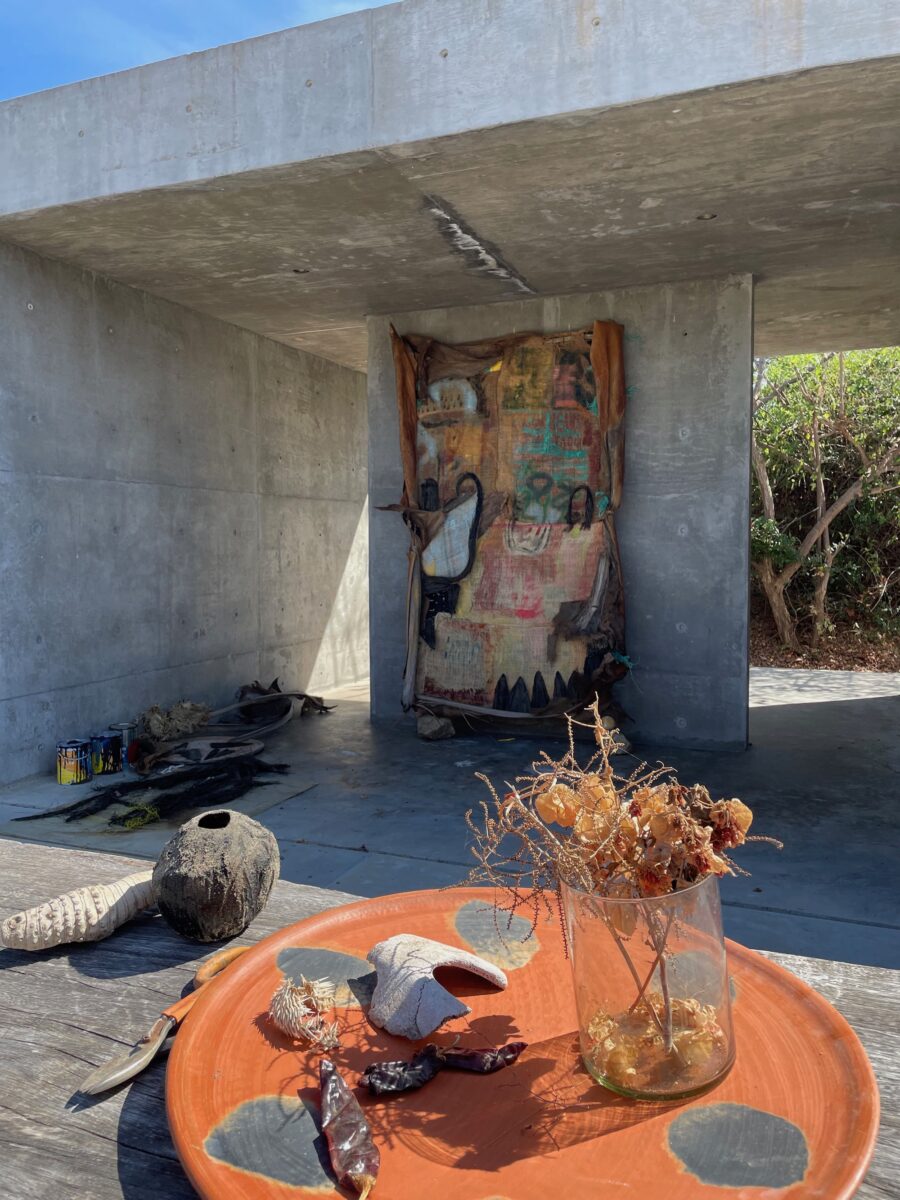
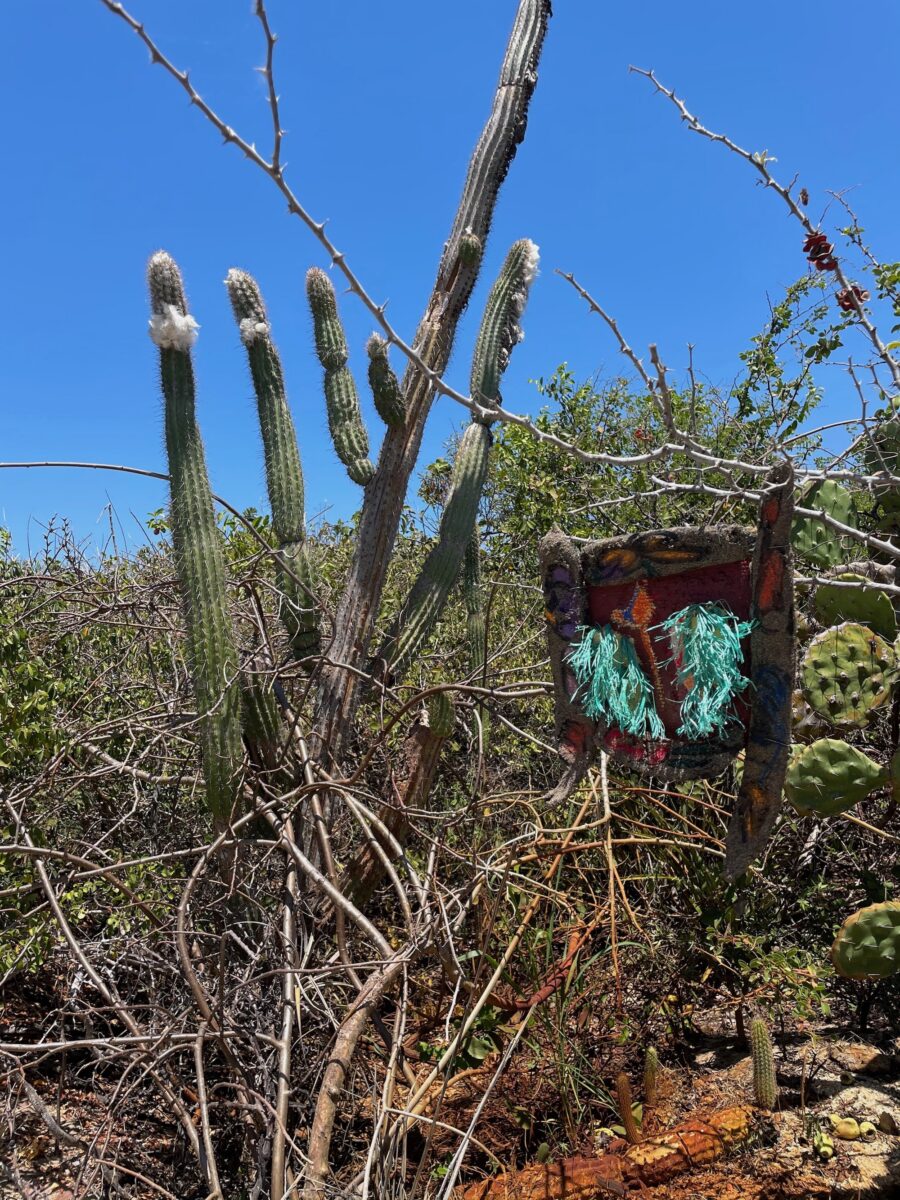
Nicholas Stavri: Where did the inspiration for your latest exhibition, “As Soon as the Sun Sets” at the Daniel Benjamin Gallery come from?
Melania Toma: This exhibition was conceived as a response to my recent trip to Mexico and to the stimuli that I encountered whilst there. Back in my studio in London, I started to elaborate on all the mental material collected. I was observing how new shapes and colours were taking space inside my thoughts. That’s when I noticed that most of all, I was missing the Sun. I felt that the time spent creating under its influence really shaped something new in me, permanently. I wanted to create a body of work to celebrate this connection. The title refers to the specific moment of time when day turns into night, and when the sun sets. For me, this passage holds a special significance: it’s the fertile moment in which objects reveal a deeper symbology. It reminds me of being back in my studio, in the dark, recollecting memories.
NS: Can you explain how the exhibition relates to your experiences during the Casa Wabi residency and the exhibition’s main themes?
MT: During my stay, I was spending most of my days wandering around looking for materials and pigments to work with. I experimented with the construction of several totemic structures. I was fascinated by the wide variety of organic and inorganic elements and all the discarded materials that humans brought in from the sea. After a few days, my studio was full of these items. All the materials I was collecting were united by the fact that they were modified from the power of the sun: deconstructed, purified… Some of them were destroyed and transformed into something else; their essence was different. My long walks looking for materials were exhausting since I was carrying everything by myself, and I was forced to take several stops to cool down in the shade. While resting I was playing with the objects, placing them in ensemble, creating new totemic structures. I was stitching them together as the pilgrimage was continuing. Since the passage between the day and night is very fast there, I found myself getting up and wandering around several times during the night. My favourite time in the residency was linked to these moments when I was sitting in the dark next to my sculptures listening to new shapes, colours and voices. In the dark, the shape of the totem and the motifs on them appeared very differently through my eyes. They were under transformation. That was also a reflection of the Wabi Sabi philosophy I was surrounded by. This impermanence that characterises the transition between light and dark is extremely fascinating to me as it mirrors the duality, operating between day and night. It’s linked to the interest in my practice of exploring the undefined borders between words and pluriverses. This also reflects the main topic of this show which is the transformative power of language in the constructing and deconstructing of our understanding of the real. I focus on the radical power of community-making (human and non-human communities) over the individual in the production of knowledge. The works in the show are questioning the factual border between materials and engage with ongoing conversations around being, experience, memory and primal energy, dealing with the fact that we are implicated in the colonial wound, consciously or not.
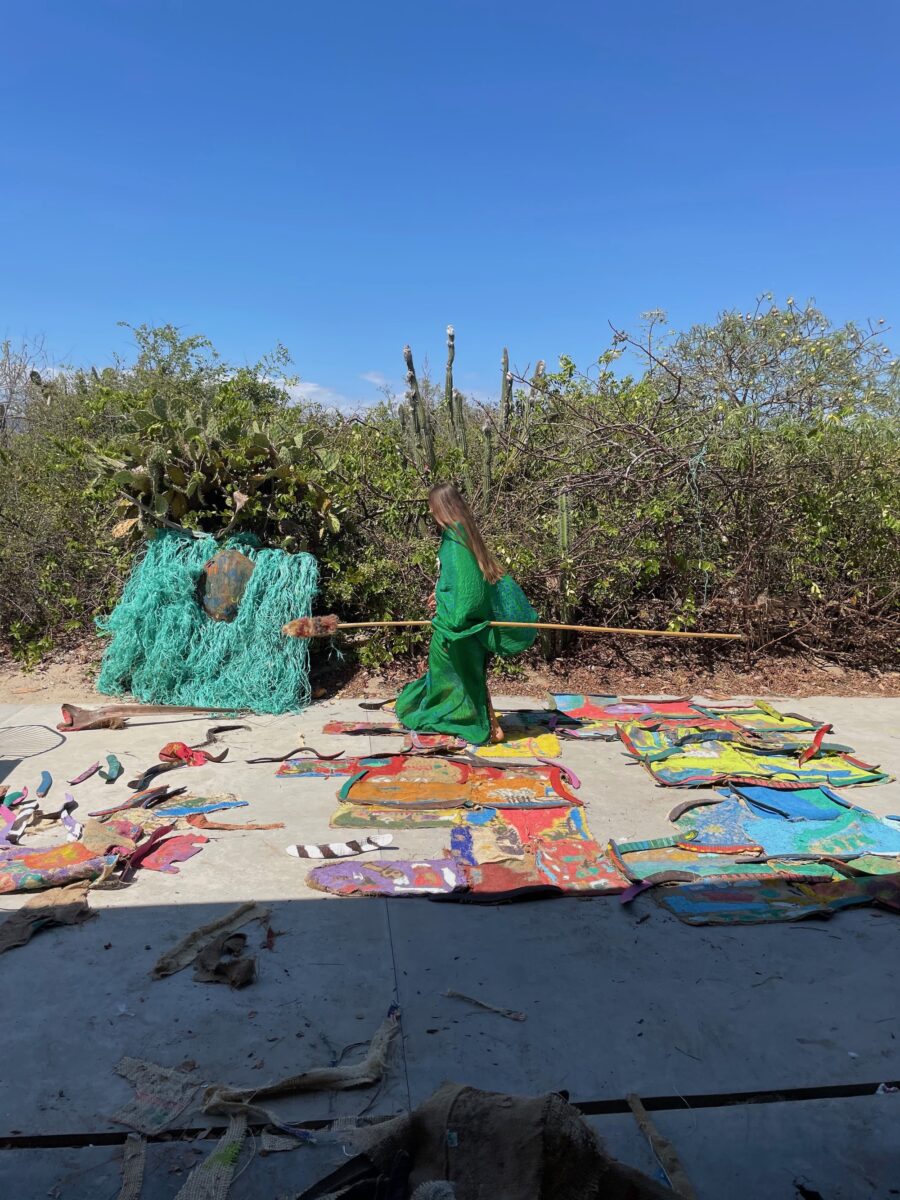
NS: Did you find that working in this type of environment influenced your work in new ways? If so how, and why?
MT: Definitely! Working specifically in the environment of the Oaxacan coast had a big impact in my practice. I felt overwhelmed by the quantity of organic matter around me. Materials from the sea and the lagoon were partly burned by the sun and the sand… I felt further away from the “frills” and closer to the naked core of my practice. The act of embarking on long walks while collecting materials – related to pilgrimages – is something typical in my practice but I can say that in Mexico I pushed it to the next level. Since the sun was too strong, I used to wake up early when it was still dark, and I used to walk until the heat was too unbearable for me. I also think I was so excited about my research that I was not properly hydrating myself at the same time. The combination of the heat and the heaviness of the transported materials often led me to have daily visions in which the materials collected were merging together. I felt that I was creating in a dreamy atmosphere, painting in the sand. So, I can say for sure that Mexico brought me closer to the bi-dimensional surface of the canvas. I feel that I am navigating a shift from furry-tridimentional structures towards the exploration of painting on a surface.
NS: You mention that this body of work draws parallels to the sculptures you created during this residency, can you expand on this?
MT: The body of works exhibited in “As Soon the sun sets” are carrying the marks of what I experienced during my residency. For the past few years, I have focused mainly on the construction of big totemic structures characterized by furry – organic and inorganic- elements. With this show I feel that I am addressing the same creatures but in transformation. This show represents a shift in my practice. I see it as a testimony of a ritual of passage that I am living right now.
NS: Expand on the idea of the Sun’s journey throughout the day, its impact on your sculptures and how this manifests in your recent work.
MT: Since the Sun’s journey and its power was the theme of the show, the works in the exhibition are a response to its movement in the sky. The works in the gallery are following a circular movement and each work’s title is a reflection of this rhythm. The show starts with the moment of Sunrise that I tried to capture in “Sole/Creature” and continues during the different stages until the night comes with “Luna II”. These two works present furry elements as I had conceived them as creatures. The most important painting for me is carrying the same title as the show. This work represents the power of the Sun, as a force of deconstruction and reconstruction.
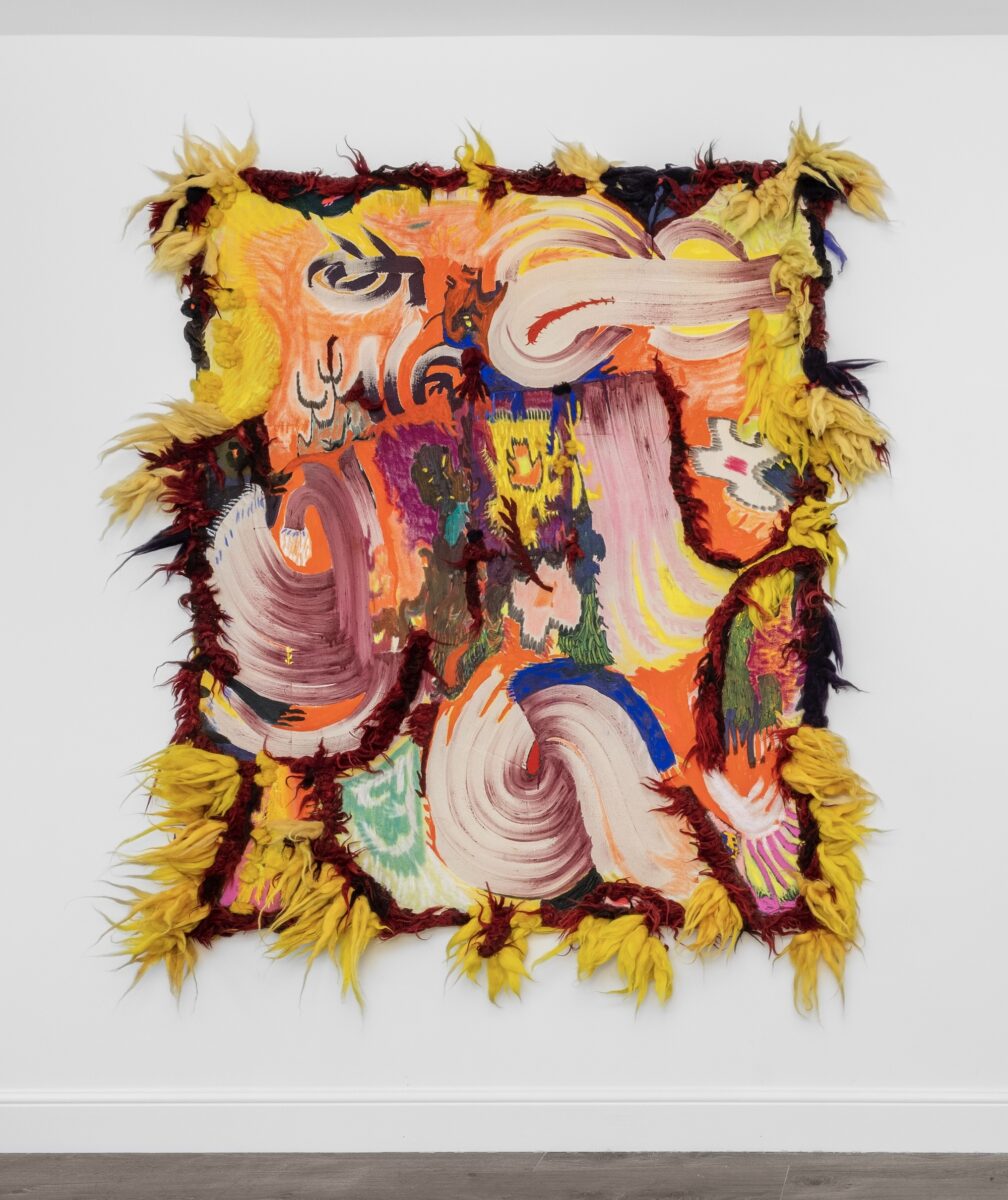
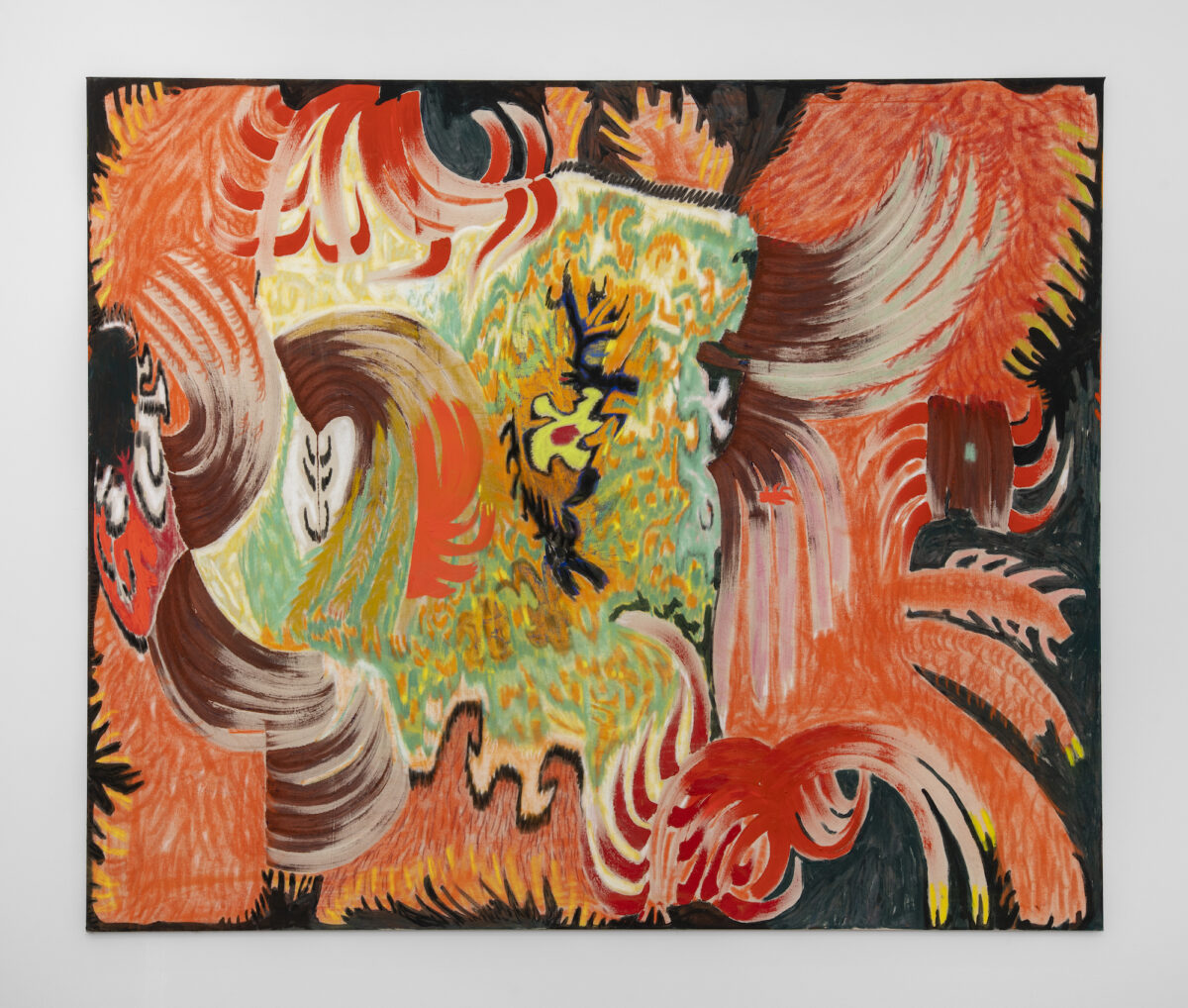
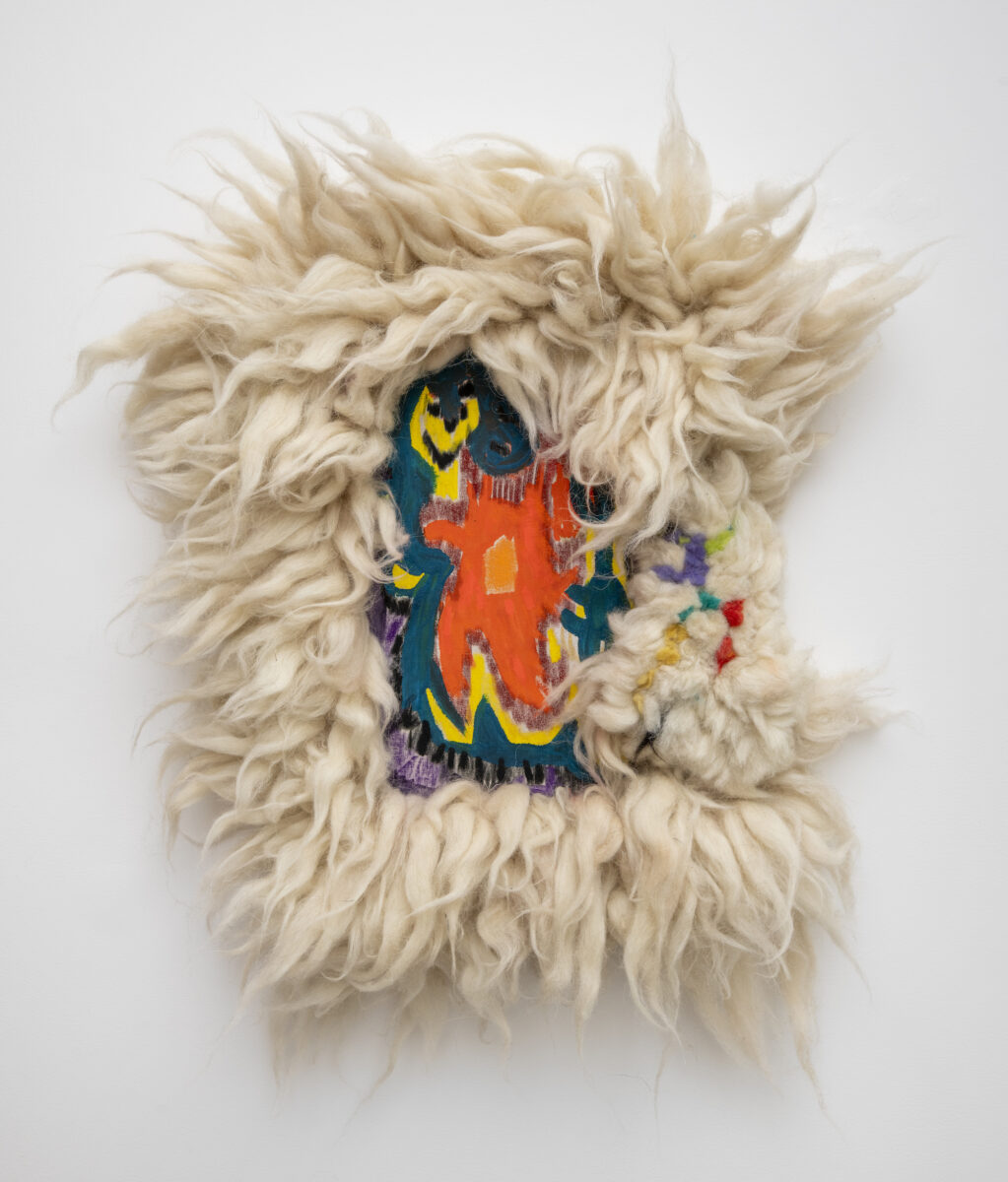
NS: Your references to the Oaxacan environment and nature seem to have a strong influence on your ideas, can you share more on this?
MT: The organic element always represents a starting point in my work both symbolically and physically. Starting from the specific Oaxacan environment, I had the chance to explore deeper my interest in land and language. Additionally, the specificity of this context allowed me to gradually open my research, touching the links between environmental destruction, colonialism, and capitalism. As part of this investigation, I had the opportunity to work with the children of the elementary school in El Zapotalito in several workshops. This area reflects the context of the Parque Nacional Lagunas de Chacahua, which is very complex under different aspects: culturally for the strong presence of afro, mixtecos and chatinos roots, and socially for the high level of marginalization, and also for the fragile ecosystem that surrounds the lagoon. In these contexts, these communities are microcosms that by their completeness, give the opportunity to deal with themes linked to the wider national Mexican context such as machismo, mestizaje, environmental racism, fishing, and the first of all the female organizations, that are attracting a big number of women in the working market. I was very inspired by the tree of the mangrove which represents the centre of biodiversity in this context. It is a symbol of the home and community, welcoming and protecting crustaceans, fish, insects and birds. Thanks to its aerial roots, it is at the core of these intersectional beings. This tree is also a symbol of the transmission of ancestral values and knowledge and there I had the chance to explore the healing power generated by the nexus community, oral traditions in the production of new semantics and symbols. This nexus, in particular, is exemplified through the exploration of the relationship storytelling/weaving-stitching act. This is a communal act uniting the practices of producing fishing nets and tapestries: opening up the exploration of power hierarchies/gender roles (female activity of weaving, male dimension of fishing: there is no defined border in this particular context). I find the tree of the mangrove extremely interesting; it is imagined as a walking creature, and this breaks the Western, Eurocentric, colonial imaginary that envisions trees as stationary, motionless organisms.
NS: Can you delve into the ecological narratives within your work?
MT: I feel very close to the concept of “becoming-with” explored by Donna Haraway. I experienced it a lot in Mexico through the act of carrying materials in my walks. I felt a bond I’ve never experienced before with the natural fibres and objects. I like the idea of a disappearing and transforming body. I also like the idea of Self merging with the ecological surroundings and pluriverse realities. In parallel, I can relate to her concept of “making-with” which deeply shapes my practice. I am interested in challenging the illusion of separation: we cannot exclude ourselves from the land, or from our ecological community. That’s why I am mainly interested in working with organic materials and found objects. They have unique stories to tell since they are not human beings. They tell earth stories and personal-human ones, addressing different ways of conceiving time; ancestral time (Earth time) vs time as an infinite chronology (Capitalism). This kinship between man and nature has always caught my attention and I like to see how the duality in this relationship is disrupted through the recognition of bonds of solidarities with other bodies (non-human, earth bodies, spiritual bodies). Creating these embodiments is a way for me to negotiate boundaries and borders.
NS: Please elaborate on the role of the unseen realm of spirits in your artwork and what it symbolizes to you within “As Soon as the Sun”.
MT: With the term spirits I am referring to presences that are hybrids of human, animal, plant… This expression refers to the necessity of a renegotiation of the category binaries that act to separate and adjudicate on who gets to be considered a subject in the hierarchies of fully human, non-human and inhuman. This realm is around us but unseen: we need other-than-human senses to have access to this invisible ecosystem.
NS: What inspired your exploration of the boundaries between language and reality, and what message do you aim to convey to viewers?
MT: I am interested in the creative power of language to not only describe reality but to create alternative worlds. The French anthropologist, Misia Landau, has said that language is not only a device for communicating ideas related to the world but it’s a “tool” for bringing the world into existence. Every language can reflect reality but can also produce new realities. I find the profound impact embedded in language’s transformative potential truly captivating. The diverse nuances of various languages make me perceive these symbols as a subjective interpretation of an untranslatable language.
NS: In your artistic journey, what challenges did you face in translating complex concepts into visual forms, and how did you overcome them?
MT: My work is 80 % outside the studio and 20 % in the studio. I want to highlight the fact that visual forms appear through my spontaneous approach to creation. That’s because most of the work is made unconsciously: during the night, outside on my walks, or when I make love. I do not plan the shapes, colours or structures, instead, I just let them appear to me in my everyday activities. I try to listen for them.
About the Artist:

Melania Toma is an Italian multi-disciplinary artist living and working in London. At the heart of her practice lies the exploration of the narrative of subjectivity – intersubjective we, within historically situated traversing webs of gender, power hierarchies, and ecological degradation. Winner of the Ingram Collection Prize and the UNIT 1 Gallery Workshop, Toma has exhibited in several notable exhibitions since graduating with her master’s degree in fine arts, Chelsea College of Arts (UAL) in London, 2020. Some of her most recent exhibitions include the ‘London Design Biennale 2023’, Triennale Milano Pavilion’ (Somerset House, London), ‘AiR’ (Casa Wabi, Puerto Escondido, Oaxaca, 2023), ‘From the Rattle’ (FOLD Gallery, London, 2023), ‘Pigeon Park 2’ (Manor Place, London, 2022).
About the Curator:
Nicholas Stavri is a curator and producer specialising in supporting emerging artists in researching, displaying and interpreting their work for diverse audiences. Acting as a creative consultant, he also advises on the practicalities of managing their studios and strategies for career development. His work has been featured online in The Art Newspaper, Juxtapoz, Design Boom, Colossal, Vice, Arrested Motion, FAD Magazine, Wonderland Magazine, The Londonist and in print publications such as The Art Newspaper, The Big Issue, VNA Magazine and Royal Docks Originals.
Nicholas is the co-founder of Thorp Stavri, Advisory Group Member for Hypha Studios, a member of the Convelio Fine Art Advisory Board and the Gallery Climate Coalition’s shipping subcommittee.
About Daniel Benjamin Gallery
Daniel Benjamin Gallery opened in the Summer of 2018 with the mission of working and supporting international young emerging artists in London.
The Gallery started with its first location in Notting Hill and moved to its new permanent location in East London, Clerkenwell as of September of 2022. Over the past five years, our attention has been dedicated to the artists we carefully selected to collaborate with and represent from the outset. This has afforded us the joy of observing their professional development, while concurrently forging partnerships with galleries in London and globally to enhance their visibility.


